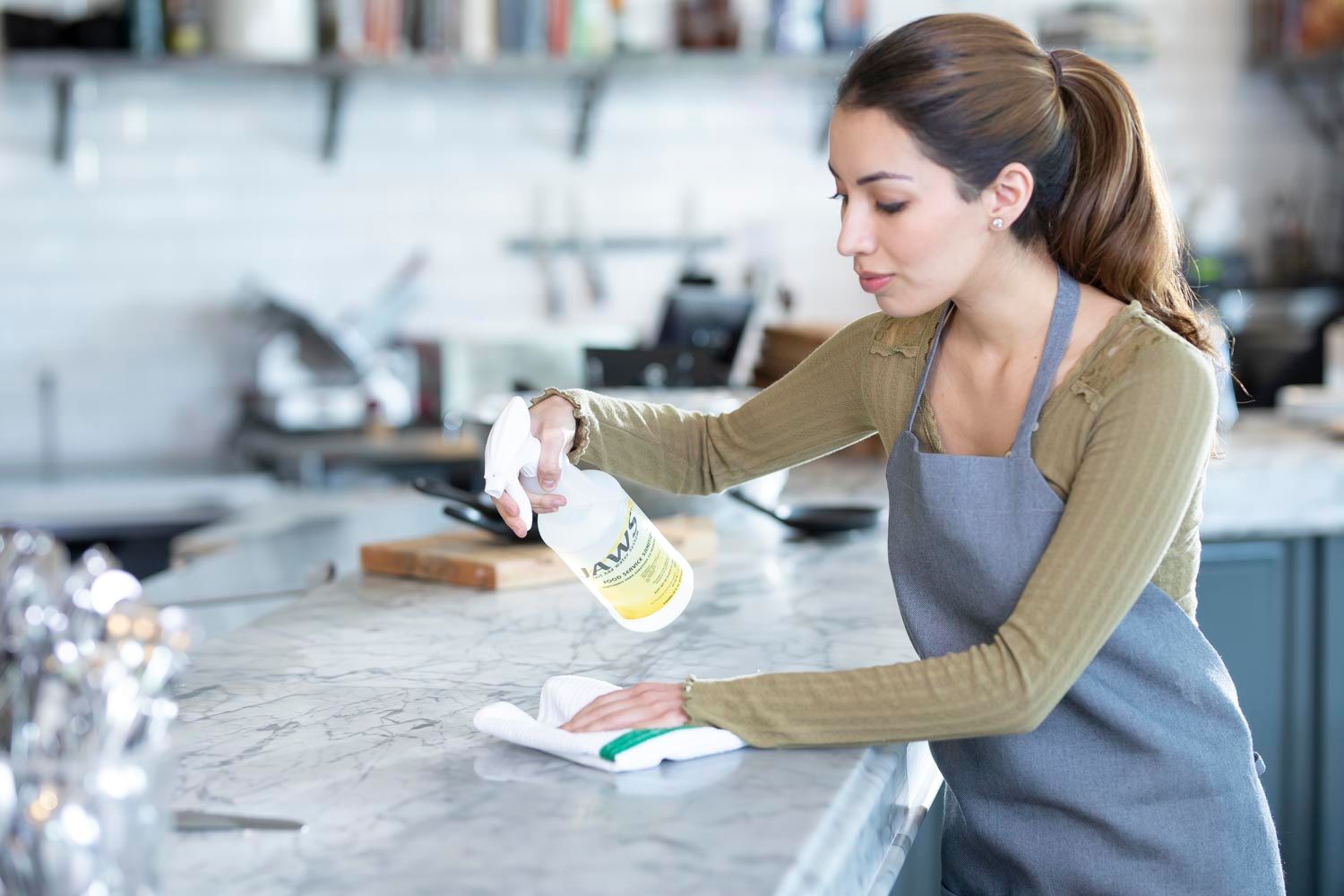
Contamination of any kind in restaurant kitchens is a huge risk to customers, to the employees who work there and to the ongoing health of the business. Food-borne illnesses like salmonella, norovirus and food poisoning can be deadly at worst and very uncomfortable at best, causing nausea and vomiting, fever, chills, and more.
One of the leading reasons why food-borne illnesses get passed through a restaurant is cross contamination. The good news is that cross contamination can be prevented. Even if a food item spoils, as will happen from time to time, it is possible to contain the issue and stop it from contaminating anything else.
What Is Cross Contamination?
Contamination occurs when food spoils or contains microbes that make people sick. Cross contamination occurs when those microbes are transferred to another surface. For example, this can happen when a raw, spoiled steak is cut with a knife on a cutting board and then the chef uses that same knife or cutting board, without cleaning them thoroughly first, to cut other food items. All the microbes from the spoiled food are transferred to the knife or cutting board — perhaps even to the hands of the chef — and are then transferred to the next item they touch.
This happens frequently in restaurant kitchens, especially when there are multiple chefs in tight spaces, sharing equipment and countertops. It can mean a lot of people end up sick.
Avoid Cross Contamination with Rigorous Handwashing
One of the best ways to avoid cross contamination in restaurant kitchens is to have personnel wash their hands frequently during every shift. This can’t be said enough: every person in the kitchen must wash their hands regularly, even if they don’t believe they have come into contact with spoiled food. This means washing when they come on shift, after they touch their face or hair, after using the restroom and after touching meat.
It may also mean washing again before touching any food that will be served without being cooked first, such as sushi, salami, and fresh salads. Uncooked food does not have the opportunity to reach the high temperatures in the oven or on the stove that can kill many food-borne illnesses.
Food Storage: Keys to Avoiding Cross Contamination
There are several ways to mitigate food spoilage and ensure that spoiled foods do not contaminate surfaces or other foods in the restaurant:
Immediately unpack and put away all cold foods, especially meats when they are delivered. Consider freezing fresh meat to kill bacteria if it will not be used right away.
Store meats separately from raw vegetables. This may mean packaging them in plastic as they defrost to ensure that the juices do not spill into the refrigerator.
Defrost all meats and fish in the refrigerator in a container that will encapsulate the juices as the product melts.
Make sure all refrigerators and freezers are at the right temperature. You might want to keep independent thermometers in the appliances and check them often.
Food Preparation: Killing Viruses and Stopping Cross Contamination
Avoid washing fruits and vegetables in the same water or area where meat is defrosted or rinsed off, because the water may be contaminated.
Do not cut or prep vegetables using the same knives and cutting boards that are used for meat. Best practices support allocating specific knives and cutting boards for meat versus fruits and vegetables to avoid cross contamination.
In larger kitchens, it is recommended to have a separate area for raw meat that is never used for any other purpose.
Get in the habit of sending used knives, cutting boards and utensils back to the dishwasher repeatedly throughout the night rather than using the same ones for the whole shift.
Cook meats to the recommended temperatures to kill off any potential bacteria that may be living in the meat.
Keep fully cooked foods away from raw foods, because cooked foods can become re-contaminated if reintroduced to the pathogens.
Maintaining Cleanliness Standards to Avoid Cross Contamination in Restaurants
Restaurants are rated regularly on their cleanliness levels for a reason: It matters to the health of diners and staff.
Though it is difficult to stop and sanitize cooking areas during a busy dinner shift, it is possible to ensure that the entire area is disinfected after each shift, including before and after breakfast, lunch, and dinner.
During the disinfecting process, it is important to take the following precautions:
Clean all knives, cutting boards, pots, pans, and dishes in a high-temperature dishwasher, so they are sanitized.
Spray down the area with a disinfectant and allow it to remain in contact with the surface for at least 10 minutes to kill all germs.
Put all dirty cleaning cloths into the laundry and get clean ones for the next shift.
Wipe down all surfaces that are often touched but not washed, such as light switches and the handles on food warmers, drink dispensers, and refrigerators.
Use a chemical disinfectant to spray down surfaces.
Double check that all food is separated and at the right temperature.
Alsco Supports Restaurants in Avoiding Cross Contamination
Alsco provides a number of services that ensure that all professional kitchens can stay up to code and avoid the contamination that comes from improper cleaning and disinfecting. We provide clean aprons and towels, and remove and launder used ones. We offer hand care products, including soaps, sanitizers, and paper toweling, and provide cleaning supplies to ensure your kitchen stays clean and safe. We clean and replace nonslip kitchen mats as needed. For more information about how Alsco can best support your restaurant, contact us today to learn about our services and how we can customize them to meet your needs.
